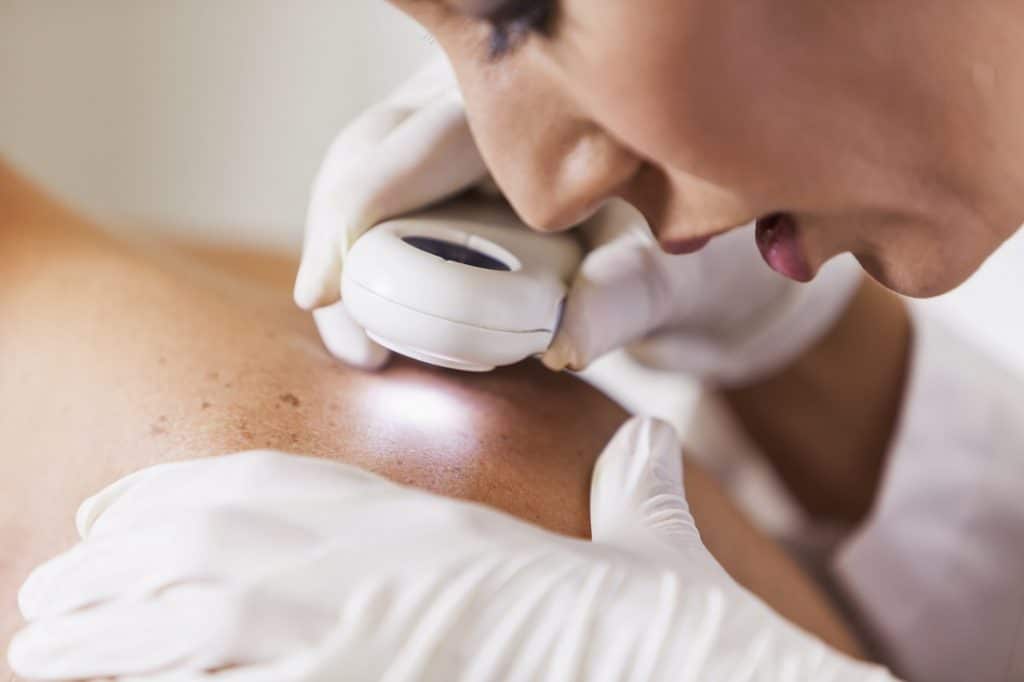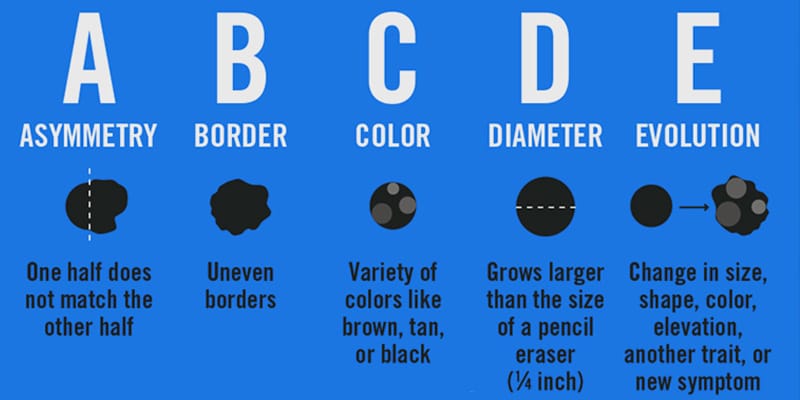Dr Tina Fang offers bulk-billed, annual skin cancer checks. Please call reception on 07 3852 4878 to book an appointment.
What is Skin Cancer?
Skin cancer occurs when the cells of the skin are damaged and begin to grow abnormally, usually from too much exposure to ultraviolet (UV) radiation from the sun or tanning beds. In Australia, the incidence of skin cancer is one of the highest in the world, 2-3 times greater than that of the US and the UK.
The abnormal growth of the skin cells forms a tumour in the skin, which can be either benign (non-cancerous) or malignant (cancerous). There are 3 main types of skin cancers, named for the type of skin cell in which they develop:
- Basal cell carcinoma (BCC) – starts in the lower layer of the dermis and contributes to approximately 70% of all non-melanoma skin cancers. BCC grows slowly over several months or years and can cause damage to nearby tissue if left untreated. The earlier it is diagnosed, the easier it is to treat. BCC rarely spreads to other parts of the body.
- Squamous cell carcinoma (SCC) – starts in the upper layer of the dermis and contributes to approximately 30% of non-melanoma skin cancers. SCC can spread to other parts of the body if left untreated, SCC on the lips or ears are a higher risk and should be examined by a doctor as soon as possible. SCC in situ, or Bowen disease, is an early form of SCC that appears red and scaly. This may develop into an invasive SCC if left untreated so should be examined by a doctor as soon as possible.
- Melanoma – starts in the melanocyte cells of the skin, the cells that give your skin its colour. Melanoma is less common than non-melanoma skin cancers but is considered the most serious form of skin cancer. This is due to its increased risk of spreading to other areas of the body (metastasis) such as lymph nodes, lung, liver, brain, and bones.
There are other types of skin cancer, such as Merkel cell carcinoma and angiosarcoma, but they are rare. Please visit the Cancer Council website for more information on these.
Signs and symptoms
You should become familiar with your skin, spots, and moles so that if any changes do occur you can pick them up. Keep an eye out for any crusty, non-healing sores, small lumps that are red, pale, or pearly in colour and any new spots, freckles or moles that change in colour, thickness, or shape over time. There are certain characteristics to look for, we recommend using the ABCDE method of checking your skin:
Asymmetry — does each side of the spot or mole look different to the other?
Border — is it irregular, jagged, or spreading?
Colours — are there several, or is the colour uneven or blotchy?
Diameter — look for spots that are getting bigger. Melanoma growths are often greater than 6mm, which is roughly the size of a standard pencil eraser.
Evolution — is the spot or mole changing or growing over time? Look for changes in size, shape, and colour.
If you notice any of the ABCDEs of melanoma, book an appointment with Dr Tina Fang right away for a skin check on 07 3852 4878. It is recommended that adults check their own skin every 3 months and see a doctor for a full skin examination once a year. Dr Tina Fang offers bulk-billed full skin examinations, just let reception know the nature of your appointment.
Causes
Anyone can be at risk of developing skin cancer, but the risk increases with age. In Australia, most skin cancers are caused by too much exposure to UV radiation from the sun, although it can also be caused from non-natural sources such as sun beds (solariums). Factors that influence your risk of getting skin cancer are:
- Actively tan or use sun beds
- Work, play sport or spend leisure time in the sun
- Family history of skin cancer
- Fair or freckled skin that burns easily
- Red or fair coloured hair, light coloured eyes
Prevention
Skin cancer can be almost entirely prevented with sun-safe practice. When UV levels are 3 or above, we recommend implementing these measures:
- Slip on sun-protective clothing (cover as much skin as possible)
- Slop on broad spectrum, SPF30 sunscreen. Apply 20 minute before sun exposure and reapply every 2 hours. If reapplying during the day is not feasible due to make-up or other reasons, consider using a mineral sunscreen containing titanium oxide or zinc oxide that creates a physical barrier to reflect the UV radiation
- Slap on a hat that shades your face, neck, and ears
- Seek shade
- Slide on sunglasses
- Stay away from sun lamps, solariums, and sun beds
The information in this article has been adapted from:
Cancer Council, Skin Cancer https://www.cancer.org.au/cancer-information/types-of-cancer/skin-cancer accessed 23rd June 2021
Cancer Council, Melanoma https://www.cancervic.org.au/cancer-information/types-of-cancer/melanoma/melanoma-overview.html accessed 23rd June 2021
Cancer Council, Check for signs of skin cancer https://www.cancer.org.au/cancer-information/causes-and-prevention/sun-safety/check-for-signs-of-skin-cancer accessed 23rd June 2021
Health Direct, Skin Cancer and Melanoma https://www.healthdirect.gov.au/skin-cancer-and-melanomas accessed 23rd June 2021
This article was written by April Stevens BSc. MD student.
26th June 2021.



